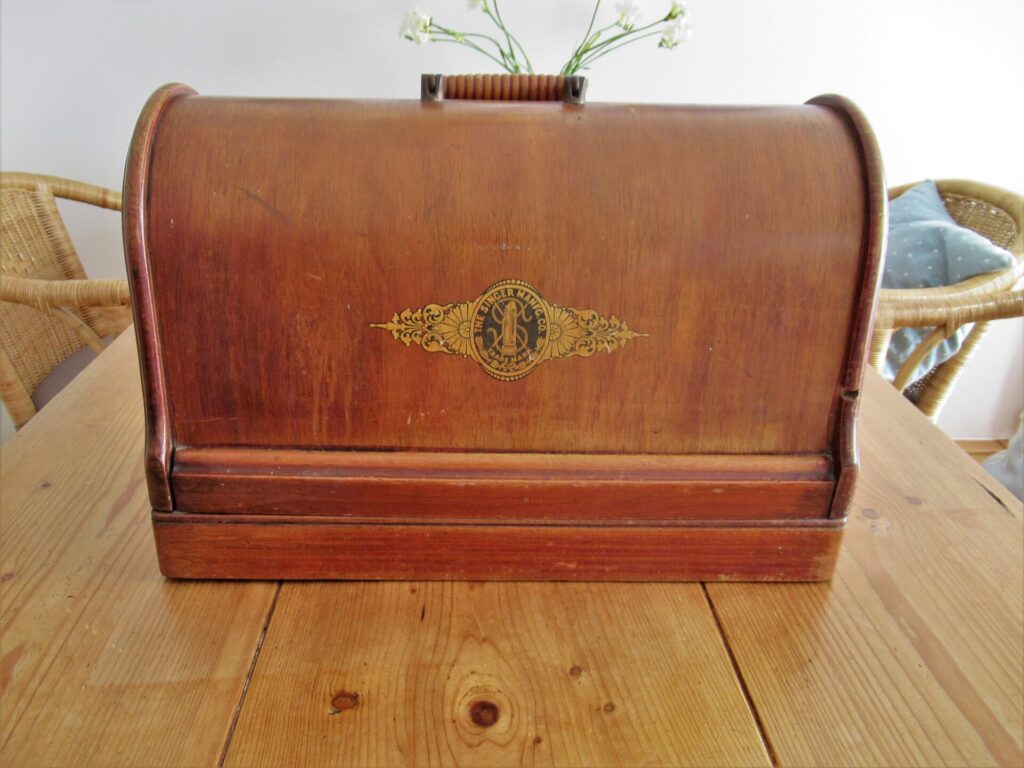
Hello!
This is the sewing machine I inherited from my mum, a Singer, above with its wooden case and below without it.
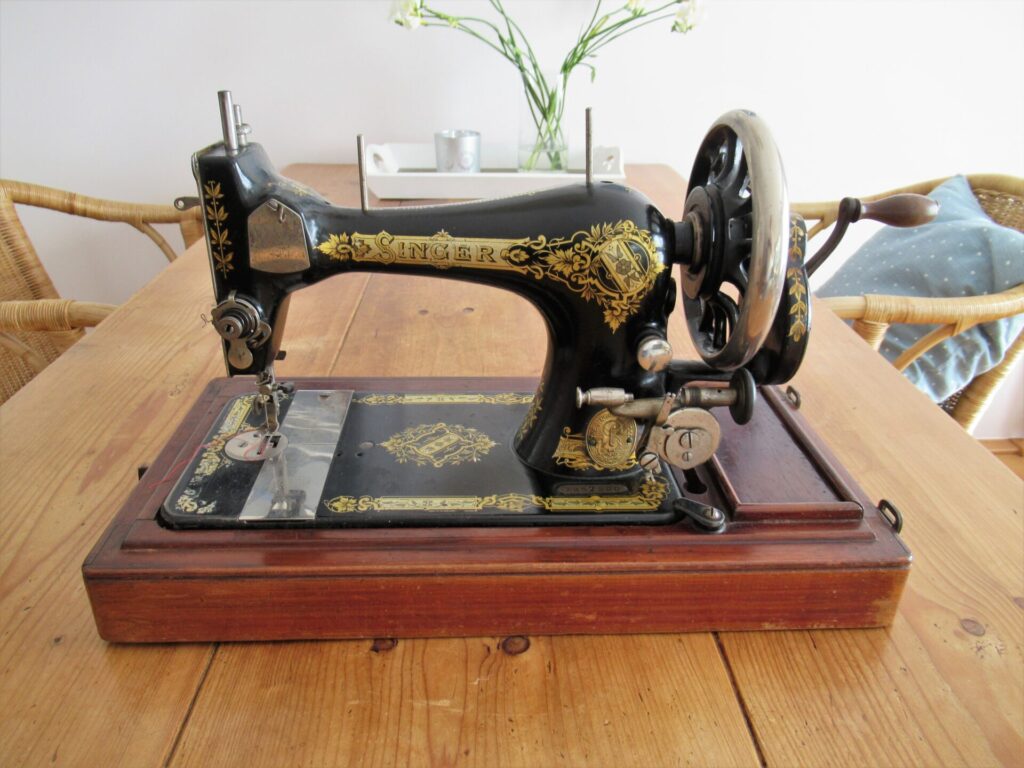
I have happy memories, sitting side by side with mum, with me turning the crank and her sewing.
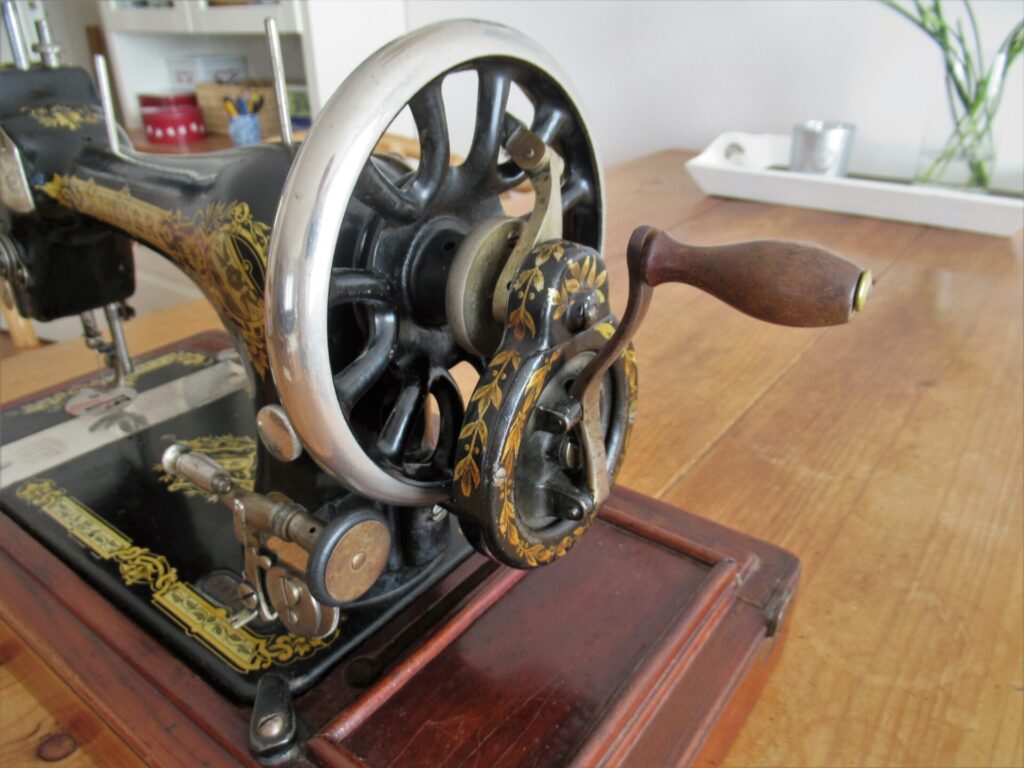
My mum was also a knitter, but she loved sewing even more. She sewed many, many dresses, skirts, blouses, trousers, jackets, curtains and other items for her family and home.
I love sewing, too, but am first and foremost a knitter. My daughter is like her grandmother, and sews more than she knits. I have had the old Singer serviced and am passing it on to her, but for the time being it still lives in our house.
One of the reasons I’m writing about this now is that I’ve lost my knitting mojo for a bit and don’t have anything interesting to show you. Another is that I’ve recently re-read The Sewing Machine by Natalie Fergie.
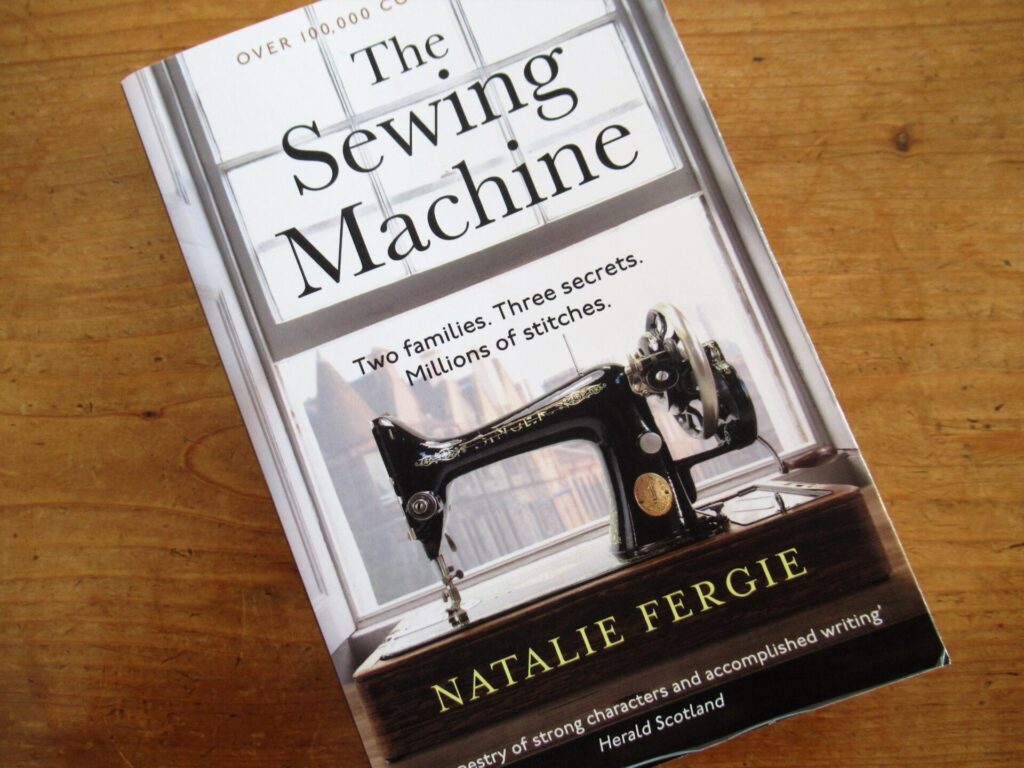
The novel is set in southern Scotland and spans over a century. It starts with the mass strike at the Singer factory in 1911, moves through the 1950s/1960s, briefly visits 1980 and ends in 2016. There are several protagonists. What binds these people together are family ties (with interesting twists) and the fact that sewing machines play an important role in their lives in one way or another.
One of the things I loved about The Sewing Machine, apart from the sympathetic cast of characters, is that it is filled with period details, like descriptions of interiors (especially kitchens), clothing, and what people did for a living. The author must have done an enormous amount of research. This doesn’t make it into a dry history book, though. Not at all! The details are cleverly woven into the fabric of the story.
If you love sewing, I think you’ll enjoy reading The Sewing Machine. I certainly have. And it wasn’t just a great read – it also made me look up the serial number of my mum’s sewing machine: H 957 200.
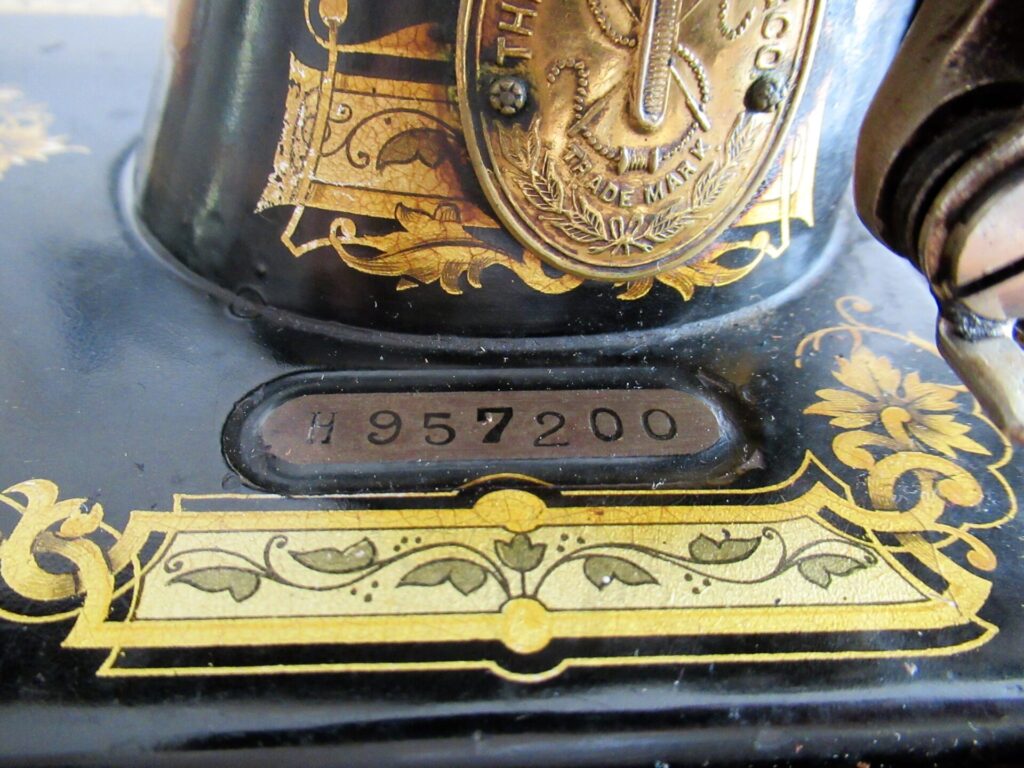
I’d never thought of doing that before. I know that my mum bought it in the late 1950s or early 1960s, and had always just assumed that it was from that period. Turns out it is from 1906!!! I could have known that she would never have bought a new one, but that it was so old – I had no idea!
My own sewing machine is a modern one…
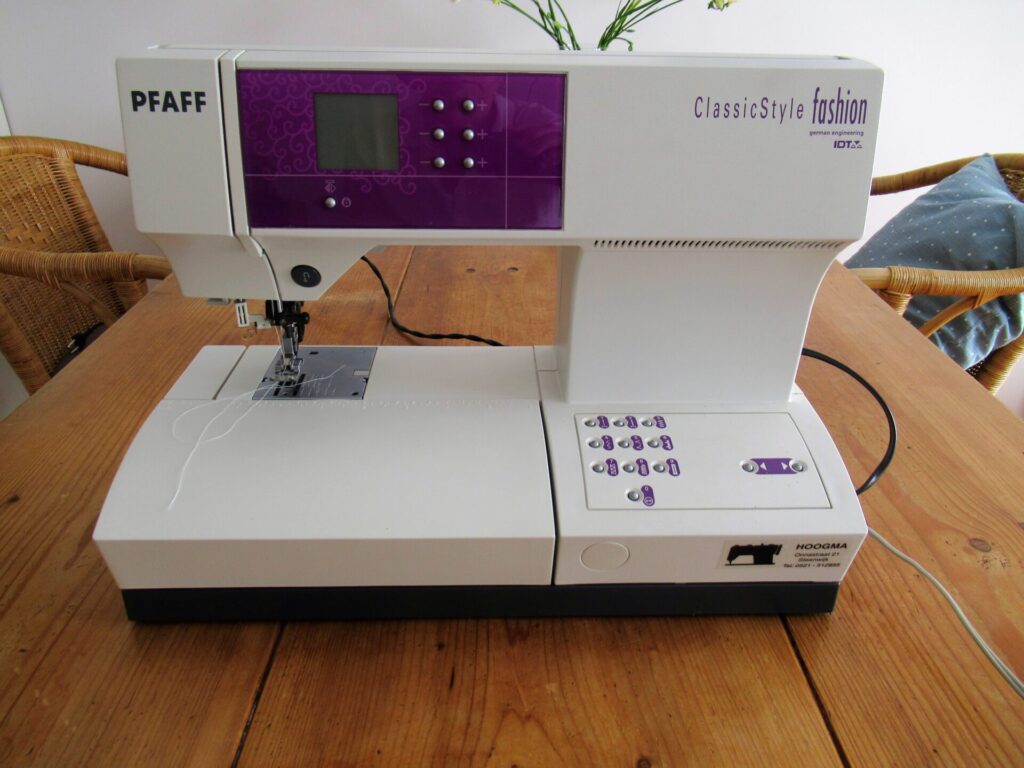
… with extra feet for various purposes, lots of different stitches and three buttonhole options.
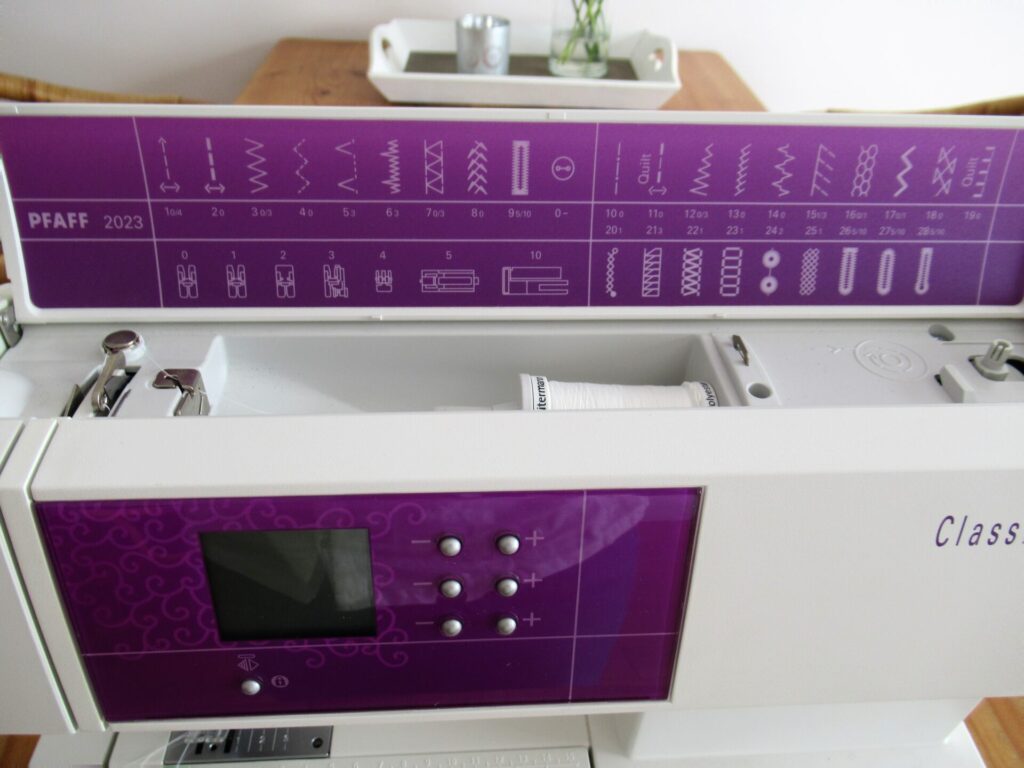
It can do far more and is much faster than my mum’s old machine. But I wonder if it will still be sewing in 116 years’ time. For me, my mum’s old Singer will always remain THE sewing machine.
I know that many of you are knitters, but do you sew, too? What type of machine do you have? What do you do with it: sew clothes or other things, embroider, quilt? Do you have special sewing-machine related memories you’d like to share? I’d love to hear them!
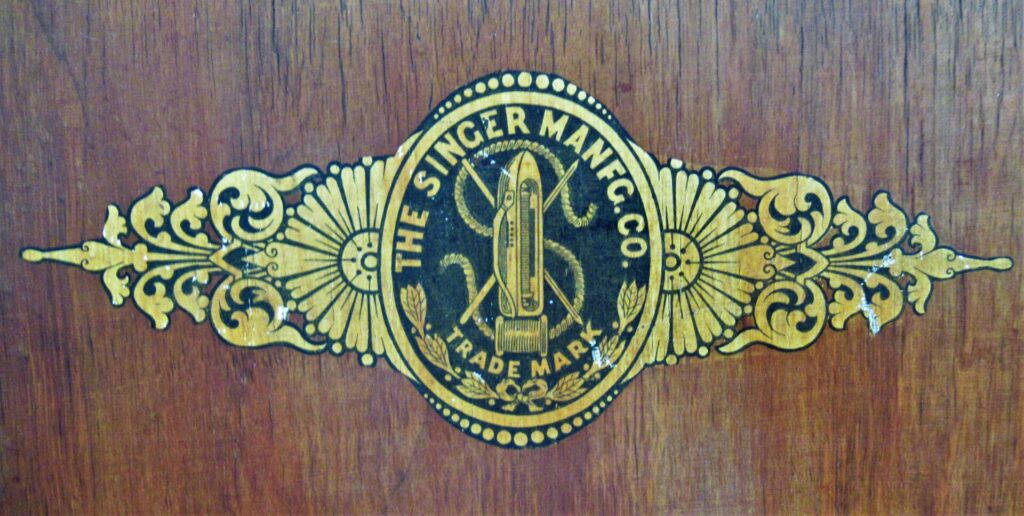
If you happen to have an old Singer sewing machine, too, and would like to find out how old it is, there is a list of serial numbers on the website of the International Sewing Machine Collectors’ Society here. If you have a different brand, visiting the website of the ISMACS may be worthwhile, too – it contains loads of interesting information.
Ik heb leren naaien op mijn moeders Vendomatic, een machine die alleen recht kon stikken, dus moest alles worden afgewerkt met Engelse naden.
Toen ik een jaar of 12 was, kocht mijn oma een Anker, op dat moment het neusje van de zalm, met wel 20 steken. Ik mocht er af en toe op naaien, en mijn oma zei dan, als ik dood ben, is de naaimachine voor jou.
Op mij vijfentwintigste verjaardag was de begrafenis van mijn oma, en ik kon me de belofte herinneren, maar al snel bleek dat mijn oma meerdere dingen aan verschillende familieleden had beloofd, en de Anker ging naar mijn tante. Een paar jaar later belde mijn tante, die Anker is stuk, ik heb hem nooit kunnen gebruiken en ik wil niet meer naaien, als jij hem wilt laten repareren, dan is hij voor jou.
Inmiddels had ik een Pfaff, maar mijn moeder had nog een vrije oude machine met kuren, dus de Anker hebben we opgehaald voor haar. Die was overigens niet stuk, maar verkeerd ingeregen door mijn tante; typisch geval van “RTFM”.
Drie jaar geleden was ik mijn Pfaff zat, een uitstekende machine voor zware stoffen, maar minder goed met de enige stoffen die ik doorgaans verwerk: linnen, katoen en tricot. Ik ben toen samen met mijn moeder naar de plaatselijke naaimachinewinkel gegaan en nu hebben we beide een Brother. Ik een chique met extra groot werkvlak, veel verlichting, een kniehendel en automatisch draad afsnijden, mijn moeder een eenvoudiger model, want zij doet alleen verstelwerk. Ik heb mijn Pfaff ingeruild, en zij ‘onze’ Anker.
Er was vroeger een reclame en dat zinnetje zit nog steeds weleens in mijn hoofd: “Mijn moeder had een Anker, ik heb een Anker en later wil mijn dochter ook een Anker naaimachine.” Niet helemaal waar, maar er hebben toch drie generaties plezier gehad van die Anker.
Wat een mooi verhaal, over de naaimachines in jullie familie. Ik wist trouwens helemaal niet dat je ook naaide. Erg leuk, dank je!
Niet veel, ik naai om de dingen te maken die ik niet in de winkel kan vinden, ik brei omdat ik het heerlijk vind om te doen.
My mother had a Singer from the late 1940’s or early 1950’s It was electric and she sewed many clothes and household items on it. It was fun getting to choose fabric and patterns as I got older and have her make things for me. I had children’s Singer as a child and it had a crank. My girlfriends had those machines too and we would get together and make clothes for our dolls. My little machine did a lot of sewing and I recently gave it to a friend for her granddaughters. It still sews beautifully even though it only does a few things. It can clearly be sewing when it reaches 100 years old.
An electric sewing machine in those days, that was a luxury! And a children’s Singer – how absolutely wonderful. I would have loved to have one as a child. Sewing together with your friends sounds very cozy. Lovely memories, and it’s also good to know that your little sewing machine will continue to be used and treasured in years to come.
My mom had an old Singer sewing machine, and made clothes for my older sister and me, as well as sewing curtains, and other items for the house.
Later, when i was in high school, my mother made outfits for Ginny dolls, and how tedious that was. She would receive a new container of materials each week, and would work feverishly to finish her “assignment” in one week’s time. I would snip the thread that connected each dress or other accessory, and helped her pack up the finished items that would go back to the company.
My mom did this laborious work, in order to afford to purchase American Tourister luggage for my sister’s and my high school graduation! Oh, the love that went into that purchase !
I enjoyed reading your post, and it resonated with me. My mom passed her Singer to my older sister, and I love all of the memories associated with it, except, perhaps, having to try things on countless times while Mom was in the process of sewing the item, in order for her to get the proper “fit”.
Thank you so much for your personal story – it’s very interesting. I didn’t know what Ginny dolls were, but looked them up and discovered that some of them are collector’s items now. Especially valuable if they’re still wearing the original clothes sewn by your mum, I bet! How wonderful that she did all that for you and your sister. Something you’ll never forget. And, yes, I also remember the fittings, carefully pulling a pinned dress over by head, feeling the pinpricks in my skin.
Oh, yes, those pin pricks… there were many of those!
I had a Ginny doll, and, sadly, I have searched high and low for her, but, as yet, have not found her…but I’m not giving up. I treasure the memories with Ginny, and her lovely wardrobe! I also treasured my Toni (sp.?) doll, and still have her! My mom made a lovely, velvet, maroon hat and coat for her, as well as several pretty dresses, of course!
Thank you, Marijke, for helping to inspire in me all of these wonderful memories! xx